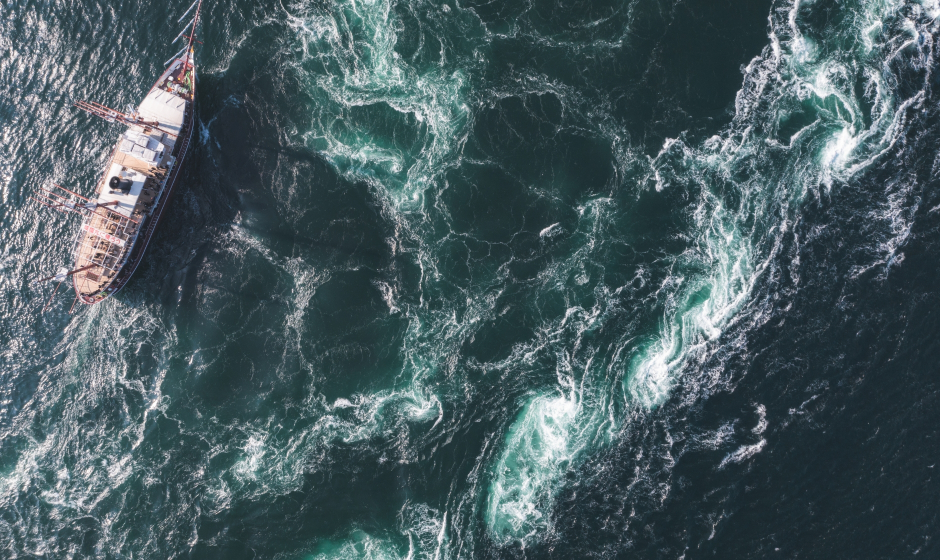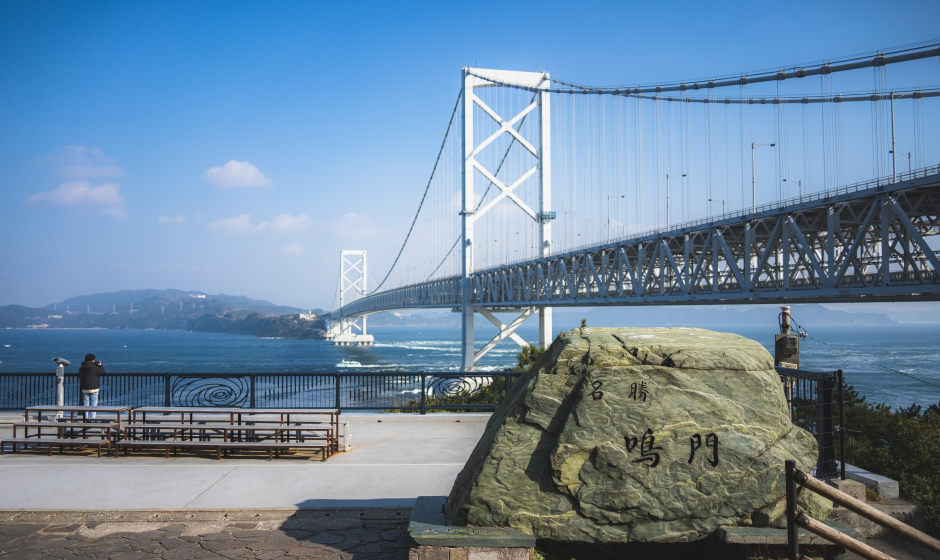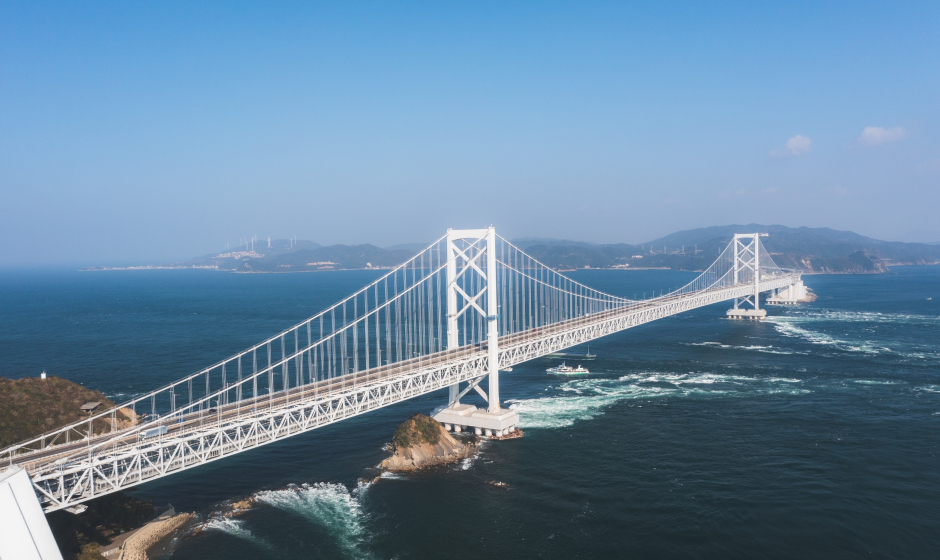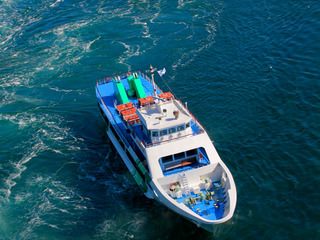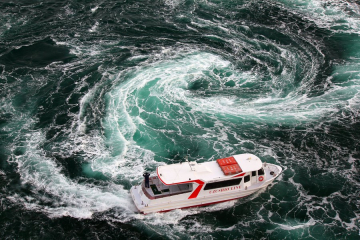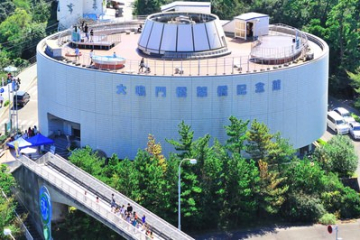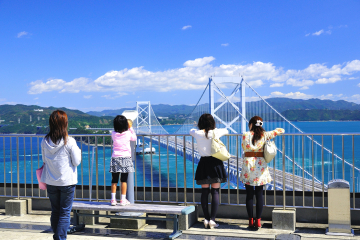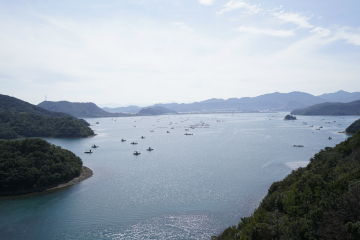The moon's pull causes the surface of the ocean to rise up, travelling from east to west as though following the moon itself. The waves created by the high tides flow to the north through the Kii and Bungo Channels. The waves that enter the Bungo Channel cause the water level to the west of the Seto Inland Sea to rise up and flow towards the Harimanada area of ocean. The waves that enter the Kii Channel caused by the high tides split into two, and flow towards the Naruto Strait and Osaka Bay. That wave then goes on to travel through the Akashi Strait and enter Harimanada, then mix with the high tide wave that has entered the Bungo Strait. It takes approximately 6 hours for the high tide to enter Harimanada after it has entered the Kii Channel. During this time the Kii Channel side changes to a low tide, and a difference in water level of up to 1.5m can be seen where Harimanada and the Kii Channel meet on either side of the Naruto Strait. The water begins to flow rapidly caused by the differences in the high and low tides, causing the whirlpools to form in the central area due to the slow flowing and fast flowing tides meeting.
Structure of whirlpools
Going to see the whirlpools
Visitors can see the whirlpools from a glass-floored bridge suspended 45 metres above the ocean, known as the "Tokushima Prefectural Uzu-no-Michi", or if they don't mind getting a bit wet, from aboard a whirlpool sightseeing boat. They can also gain splendid views of the sunlit Uchinoumi sea, passing ships, and the mountain-backed shores from the Naruto Skyline, Eska Hill, or Ohnaruto Bridge Crossing Memorial Hall Eddy. Views of the whirlpools can also be enjoyed while eating traditional Japanese confectionary and souvenir shopping at Senjojiki or the Tea Garden Observation Deck.

